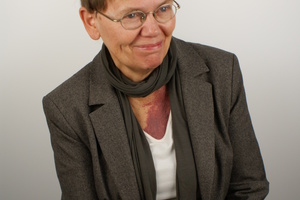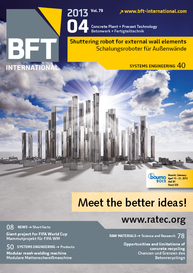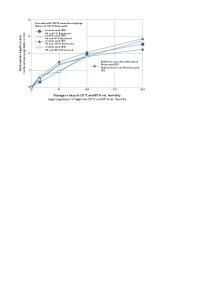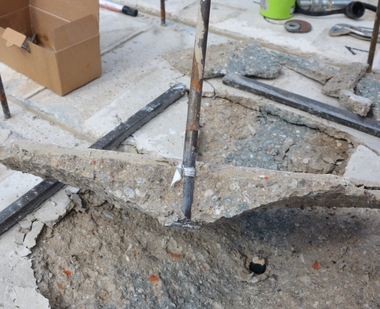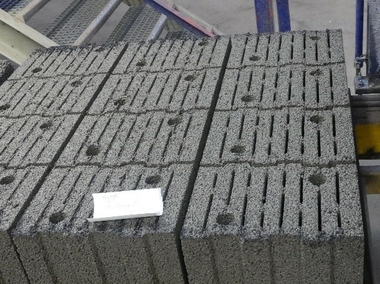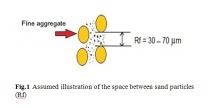Opportunities and limitations
of concrete recycling
In the future, concrete production could increasingly rely on the use of recycled aggregates. Part I of this article deals with the optimization of the mix design and mixing process and refers to the mechanical properties of recycled-aggregate concrete.
Concrete is the most commonly used construction material worldwide. When considering the cement quantities manufactured in Germany since 1950 for determining the produced concrete volumes and calculating the amount of concrete that has accumulated in existing buildings and structures, this exercise results in a notional volume of over 12 billion t (Fig. 1).
However, the actual amount of concrete built up since 1950 is smaller because the volumes removed by demolition need to be subtracted. If we assume that this concrete volume was equivalent to 18% of annual concrete production until 1995 and to 80% of the amount of construction waste generated per year from 1996, the amount of concrete contained in existing buildings and structures equals about 10 billion t.
The man-made concrete stocks have thus reached a considerable level. In the future, an increasing share of this stock will be used as a raw material even though it continues to remain significantly below the existing stocks of sand and gravel, which are estimated at 220 t [2].
Establishing in practice
Each year, about 80 million t are taken out of the existing man-made building material stocks. After reprocessing, the resulting recycled materials amount to between 50 and 60 million t, the major share of which is used in road construction and civil engineering (Fig. 2). In this area, recycled building materials made of asphalt or crushed concrete can be used. This sector thus benefits from an almost closed material cycle. In contrast, this stage has not been reached yet in building construction. For instance, an average of only 1.2 million t of crushed concrete is currently converted to recycled aggregates for use in concrete production. This figure corresponds to a share of 2.2% in the total volume of reprocessed construction waste.
One of the prerequisites to establish the production of concrete from recycled aggregates in practice is the existence of rules and standards that define the requirements for these aggregates and their possible uses in concrete. These rules were prepared particularly on the basis of the findings of the joint research project on the “Material Cycle in Concrete Construction” and in conjunction with the introduction of European standards. In the meantime, they have reached a stage where it is possible, depending on the specific use of the concrete, to substitute a certain portion of natural aggregates by recycled materials in a defined composition without having to modify the design assumptions.
The construction of model buildings is another instrument that has been used in the past few years to promote the aspect of recycling in building construction. The initiatives launched in Ludwigshafen and Stuttgart in 2009 showed that recycled-aggregate concrete produced in accordance with relevant rules and standards is a full-fledged construction material that can also bring about environmental benefits [4] [5] [6].
In urban agglomerations where natural aggregates for concrete production need to be sourced from more distant regions, recycled aggregates provide a number of benefits because they are available either locally or from sources close to the site. We expect an increase in the use of recycled aggregates for concrete production especially in such agglomerations where there is also high demand for construction activity.
2 State of research regarding concrete production using recycled aggregates
Recycled aggregates for concrete are composites even though they are appropriately separated by careful, selective dismantling and demolition. Their composition may vary from particle to particle (Fig. 3).
The composite nature of recycled concrete aggregates results in variations in their characteristics. In particular, porosity parameters may theoretically range from the porosity of the cement paste to the porosity of natural aggregates, which compromises the quality of the recycled materials. Furthermore, the quality of these materials fluctuates more significantly compared to natural aggregates. Various research approaches thus aim to reduce the porosity of the materials.
One of these approaches is to develop reprocessing methods to create aggregates free from cement paste. Three categories of methods can be distinguished in this regard:
methods aiming to create tensile and compressive stresses acting on the interface between cement paste and aggregate particles,
methods that rely on abrasive action,
methods that combine thermal and abrasive actions.
Electrodynamic process and microwaves
Reference [9] includes an overview of these methods. The method of generating tensile and compressive stresses in the interfacial area to separate the concrete constituents was described most recently in [10]. An electrodynamic process was applied in which the concrete was immersed in water and impacted by an underwater spark discharge. Another process investigated involved the use of microwaves to weaken the structure of the concrete. Compared to untreated concretes, an increase in the share of paste-free particles was found. For instance, the share of such particles in the 6.3-8mm range amounted to 26.0% without treatment whereas 33.2% were reached during microwave treatment and 45.6% were achieved in the electrodynamic process.
Noguchi [11] also describes the use of microwaves to produce paste-free recycled aggregates for concrete. For this purpose, a dielectric material is applied to the surface of natural aggregates to be used in concrete. If these concretes are exposed to a microwave treatment, this influence results in selective heating of the phase boundary between natural aggregate and cement paste and in a subsequent separation occurring at this point.
Sui [12] [13] comprehensively investigated the combination of thermal and abrasive actions. According to these findings, temperatures from 250 to 300 °C are sufficient to make the cement paste so brittle that it can be removed from the surface of the original aggregate during subsequent treatment in a drum mill. One of the parameters used to prove the achieved quality improvement is the paste ratio. Prior to the treatment, the paste ratio of the 2-4mm and 4-8mm sizes ranged from 18.5 to 22.3 m.-%. The treatment reduced this ratio to 6.9 to 9.7m.-%.
Noguchi [11] states that the production of paste-free recycled aggregates by combining thermal and abrasive actions is already being tested on an industrial scale. A plant with a throughput of four tonnes per day produces almost completely paste-free coarse and fine aggregates and a finely dispersed secondary product in which the paste is enriched.
Coating with microsilica
Tam [14] proposes the removal of the cement paste from coarse recycled aggregates by an acid treatment. 0.1 molar hydrochloric, sulfuric and phosphoric acids were used for this purpose. The improvements achieved were relatively minor; they were measured on the basis of changes in water absorption and compressive strength.
Another approach to improve the characteristics of recycled aggregates is the tailored sealing of the particle surfaces of recycled coarse aggregates. Katz [15] applied ultrasound cleaning to recycled coarse aggregates taken from three laboratory concretes with various compressive strengths and subsequently immersed them in a microsilica suspension with a 10% solids ratio. This treatment caused the material to form a deposit on the surface, which amounted to about 0.5 to 0.8% of the aggregate mass. Concretes produced from these coated aggregates showed an increase in compressive strength compared to the untreated specimens. This increase was found to be more significant after seven days than after 28 days. A concrete containing natural aggregates that were also treated using this method revealed a decrease in strength.
Descarrega [16] also investigated the coating of recycled aggregates with microsilica. Phase analyses demonstrated a pozzolanic effect between the added microsilica and the calcium hydroxide, which led to an increase in particle strength.
Tsujino [17] evaluated the sealing of the surface by water-repellent additives. Two products commonly used in concrete technology were applied: a mold oil and a hydrophobic silane. The strength parameters of the concretes that contained silane-treated aggregates were considerably lower than those of the concretes containing untreated aggregates or aggregates to which the mold oil was applied.
Carbonation
Kou [18] investigated the impregnation of coarse recycled aggregates with polyvinyl alcohol (PVA) as a method to improve their quality. With regard to their strength, the coated aggregates showed minor improvements after 28 days and more significant increases after 90 days compared to the untreated aggregates. Marked improvements were found for other characteristics such as dry shrinkage and chloride ion penetration resistance.
The quality improvements by self-healing effects described in [19] to be achieved by the subsequent hydration of crushed concrete immersed in water are minor. Furthermore, the investigated crushed concrete was taken from a concrete testing laboratory, which is why it can be assumed that this concrete was of a relatively early age not representative of concrete taken from existing buildings.
Figure 4 shows the various surface treatment methods applied to recycled aggregates and their effects on compressive strength. These findings permit the conclusion that the microsilica treatment achieves the most significant effects. The effects of the other methods are either minor or even result in a decrease in compressive strength.
Seidemann [20] and Garbiec [21] describe the targeted carbonation of recycled aggregates for concrete as a method to seal their surface. Seidemann treated the recycled aggregates in a tubular reactor through which a mix of carbon dioxide and air was flowing. Applying mercury intrusion porosimetry, a decrease in porosity from 35.0 vol.-% to 25.2 vol.-% is achieved after twelve hours of treatment at a CO2 content of the gas flow of 20 vol.-%. Garbiec exposed the recycled aggregates to biodeposition using a certain bacteria species, proving an absolute decrease in water absorption by 1 m.-%.
2.2 Influence of changes in the mix design on the quality of recycled-aggregate concrete
The method used to calculate the composition of recycled-aggregate concrete is usually identical to the approach applied to concrete with natural aggregates. The mix design can take account of additional water demand caused by the water absorption of recycled aggregates. In this case, a distinction needs to be made between the effective water/cement ratio, which results from the cement content and the amount of water available for cement hydration, and a “gross” water/cement ratio that includes the additional amount of water absorbed by the recycled aggregates.
In the literature [22] [23], further methods are described that go beyond the volume-based approach to determining the mix design:
Direct Weight Replacement Method (DWR): A certain mass of natural aggregates is replaced with recycled aggregates. The added amounts of cement and water remain unchanged.
Equivalent Mortar Replacement Method (EMR) according to Fathifazl [23]: The recycled aggregates are considered to be two-phase composites that comprise the adhering mortar and the original, coarse natural aggregates. The volume of the mortar adhering to the particles is taken into account when calculating the mix design.
The use of the EMR method requires the experimental measurement of the amount of mortar contained in the recycled aggregates. The following methods are mentioned:
After water saturation and heat treatment, the mortar is mechanically removed from the aggregates [24].
The mortar structure is loosened by treatment with an Na2SO4 solution and exposure to freeze/thaw cycles, and the mortar is removed mechanically [25].
A comparative analysis of the effects of the individual mix design approaches on the composition and characteristics of the concrete was carried out in [22]. With respect to the composition of the mix, the investigations (Table 1) reveal relatively minor differences between the mix designs calculated using the volume-based and mass-based methods. Applying the EMR method to the calculation of the mix design results in a significant difference when replacing 42 vol.-% of coarse natural aggregates with recycled aggregates.
EMR concretes
When evaluating the concrete characteristics determined by Knaack [22] for comparable mixes, a dramatic deterioration of workability in line with an increase in the share of recycled aggregates is found for EMR concretes even if plasticizers are added to counteract this trend. Only minor differences in strength were found for the mass or volume-based substitution methods. The strengths of EMR concretes are lower than those of the concretes produced according to the volume- and mass-based mix design method. The EMR concretes produced by Fathifazl [23] showed no changes in strength because their cement and water contents differed only insignificantly from those of the concretes with a conventional mix design. Improvements were identified for the elastic modulus.
In conclusion, the comparison of the various mix design methods shows that the EMR method does not result in compelling benefits. The assumption on which this method is based (i.e. that the old mortar causes the inferior performance of recycled-aggregate concrete) is too fuzzy. First, it is the old cement paste, rather than the mortar, that causes the changes. Second, it appears more appropriate to identify options for reprocessing crushed concrete in such a way that paste-free recycled aggregates are produced to prevent quality deterioration. In addition, it is doubtful whether the method used to determine the mortar content is indeed practicable. For the reasons mentioned above, the ratio of the old cement paste should preferentially be used to characterize recycled aggregates. This parameter can be determined by selective dissolution using hydrochloric acid. This method is based on the measurement of the cement content in accordance with DIN 52170-3: 02-1980 [26] and was modified by Weimann [27] to determine the paste ratio of recycled aggregates. It delivers reliable results for recycled aggregates that do not contain limestone particles or dust, as demonstrated by investigations of model mixes comprising pure cement paste and siliceous aggregates [28].
Poon [29] investigated the influence of subsequent water addition on concrete quality. When using kiln-dried coarse recycled aggregates, this water addition improves the initial consistency compared to using water-saturated recycled aggregates. The slump loss, i.e. the continuous stiffening of the mix after water addition, is higher compared to the use of waterlogged recycled aggregates because the dried recycled aggregates absorb water from the fresh concrete mix. Poon recommends the use of recycled aggregates with an equilibrium moisture content, which achieve higher compressive strengths compared to water-saturated recycled aggregates.
The consistency of recycled-aggregate concretes can be managed by adding plasticizers in very much the same way as to concrete with natural aggregates. This usually eliminates the need for any subsequent water addition.
2.3 Influence of changes in the mixing process and of the use of admixtures on the quality of
recycled-aggregate concrete
Tam [30] [31] [32] investigated several mixing process variations. The most significant increases in strength were achieved when the modified process included premixing of the aggregates and their subsequent prewetting using a certain portion of the water required according to the mix design. Cement was added in the next step. The remaining portion of the water was added only after another mixing step. The ratio of coarse recycled aggregates amounted to a maximum of 30 m.-%.
Further modifications were investigated, including the splitting of cement addition into the two stages of the mixing process or the addition of microsilica at the first stage. However, the resulting improvements were of a minor nature.
Deyu Kong [33] compared three different mixing processes:
a mixing process in which all components are premixed in dry condition, followed by the addition of water
the mixing process according to Tam in which the prewetted aggregates are mixed with cement and, if required, a concrete admixture, followed by the addition of the remaining water at the end of the process
another mixing process in which the admixture is added prior to cement addition.
All of the coarse aggregates were replaced with recycled aggregates. Minor increases in the 28-day strengths were found in the two-stage mixing sequence compared to the single-stage process. Significant improvements were found when applying the triple mixing method.
Jiusu Li [34] investigated a mixing process that begins with a coating of the recycled aggregate in an admixture suspension (Fig. 7). In this process, all of the coarse aggregates were substituted by recycled aggregates.
Microsilica, coal fly ash and blast-furnace slag were used as admixtures. Concrete strength parameters improved significantly but decreased again when combining two admixtures in varying proportions.
Figure 8 shows a comparison of the effects of the individual mixing processes on concrete compressive strength after 28 days.
Improvements by admixtures
The most significant strength increases were found for the mixing processes in which the admixture was added first, followed by the addition of cement. Researchers are in agreement as to the reasons why this happened: the admixtures enhanced the phase boundary between the recycled aggregate and the new cement paste whilst also filling cracks in the recycled aggregate. Electron microscopy is used to prove this behavior in specific instances.
The addition of admixtures usually resulted in improvements compared to the recycled-aggregate concrete without admixtures. When the admixtures were added in addition to the cement, the strengths of the recycled-aggregate concretes improved in line with the increase in the added amount. This increase, however, was not greater than found for concrete without recycled aggregates. The addition of coal fly ash as a cement substitute led to a decrease in strength, which appeared to be even greater for the recycled-aggregate concretes.
For the mixing-in of additional powder additives, several investigations found an increase in the density of the concrete, which is attributed to an increased packing density [35] [36] [37]. None of these tests, however, was designed to enable the identification of any particular characteristics of recycled aggregates associated with the use of reactive mineral materials as cement substitutes. The issue of whether the calcium hydroxide potentially present in the paste of the recycled aggregates is involved in pozzolanic reactions was raised but not consistently investigated.
2.4 Mechanical properties of recycled-aggregate concrete
Many investigations deal with the changes in compressive strength, elastic modulus and concrete deformation parameters. They mainly concentrate on the share of recycled aggregate in the total amount of aggregate used. In many cases, only the coarse aggregates are substituted.
As early as in 2003, Müller [7] made an attempt at summarizing and systematizing the large number of findings. For this purpose, the values measured for recycled-aggregate concretes were related to the relevant reference concrete to eliminate the influence of the new aggregate and new cement paste. We arrive at the same conclusion when repeating this analysis using the new data that has recently become available. Relative compressive strengths and elastic moduli decrease as the recycled aggregate ratio increases, with the elastic modulus decreasing more significantly than compressive strength (Fig. 9). This phenomenon occurs because the share of the old cement paste increases as more and more recycled aggregate is added. The influence of this paste varies for compressive strength and elastic modulus. When considering, for example, compressive strength (for which porosity is the most relevant influential parameter), the increased porosity resulting from the greater paste ratio is the main factor that decreases concrete strength. In contrast, the porosity and structure of the strength-enhancing calcium silicate hydrates in the cement paste are important factors with an effect on the elastic modulus, which results in a stronger influence in this regard.
Increasing variation of strength
Only a weak correlation was found between the relative compressive strength and the recycled aggregate ratio. This outcome is consistent with earlier analyses. A minor decrease in strength occurs when replacing coarse aggregates with recycled aggregates.
The trend curve for the relative elastic modulus is characterized by a significantly higher coefficient of regression. Nonetheless, some of the findings cited in the literature deviate considerably from the trend curve. Further clarification is needed in this regard. One of the likely causes is the quality of the concrete from which the recycled aggregate is produced.
The linear analysis that forms the basis for the estimated decreases in strength and elastic modulus is merely a rough approximation at least with respect to the dependence of strength on the recycled aggregate ratio. Compared to the use of fine and coarse recycled aggregates, the decrease in strength is less significant where only the coarse chippings are replaced with recycled aggregates (Fig. 10).
Furthermore, a significant increase in the variation of strength of natural-aggregate concrete is found compared to the concrete with recycled fine and coarse aggregates.
05/2013 (May).

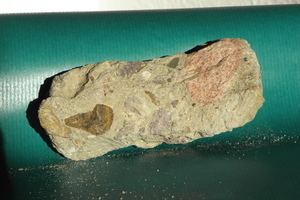
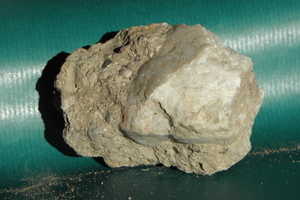
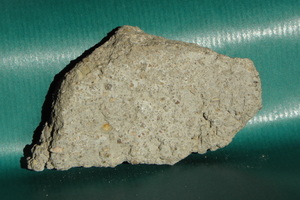
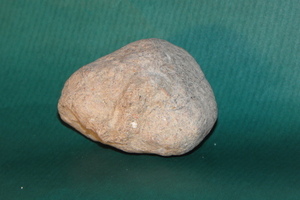
![1Amount of concrete accumulated in existing buildings and structures (cement production data taken from [1], simplified calculation of the concrete volume excluding the use of cement in other products)](https://www.bft-international.com/imgs/5/3/7/7/5/1/tok_c518132a6f45ab308b7793cf84790a66/w300_h200_x297_y421_590ddcdcf296a4d7.jpg)
![2Recycled amounts of construction waste and fields of use of recycled building materials produced from this waste [3]](https://www.bft-international.com/imgs/5/3/7/7/5/1/tok_9a369718011b76bdbcf62308b71ba788/w300_h200_x297_y421_8d9d7a27d9e9dd92.jpg)
![4Effects of various surface treatment methods on relative compressive strength, with untreated recycled-aggregate concretes used as a reference [15] [17] [18]](https://www.bft-international.com/imgs/5/3/7/7/5/1/tok_2d713a4785ac5036134eb276657ee294/w300_h200_x297_y421_f64c155497391f97.jpg)
![5Mixing process applying the two-stage mixing approach (TSM) according to Tam [30]](https://www.bft-international.com/imgs/5/3/7/7/5/1/tok_1d79f564aa6cb8169d0daab57249ac1f/w300_h92_x400_y46_615dfa263fd10884.jpg)
![6Mixing process applying the triple mixing method according to Deyu Kong [33]](https://www.bft-international.com/imgs/5/3/7/7/5/1/tok_30a7515a09b74ca920a881c14b9e759d/w300_h101_x400_y50_867614b74cdd171f.jpg)
![7Mixing process with integrated coating according to Jiusu Li [34]](https://www.bft-international.com/imgs/5/3/7/7/5/1/tok_830fe142bcd9c4cc505957f2ab32d82f/w300_h112_x400_y56_e6b6140074ee40eb.jpg)
![8Effects of various mixing processes on relative compressive strength, with recycled-aggregate concretes produced in a conventional mixing process used as a reference [30] [31] [32] [33] [34]](https://www.bft-international.com/imgs/5/3/7/7/5/1/tok_6dab07d3e1d6a9cbf9fd976d7068b327/w300_h200_x297_y421_e7697ad3d59cd82d.jpg)
![9Dependence of relative compressive strength and elastic modulus on the ratio of recycled aggregates after 28 days [38] [39] [40] [41] [42] [43] [44]](https://www.bft-international.com/imgs/5/3/7/7/5/1/tok_40b8d1a5a388f16ce707ce705cc6b237/w300_h200_x297_y421_b4a68af60afd25d6.jpg)
![10Dependence of compressive strength on concrete bulk density when using recycled aggregates [45]](https://www.bft-international.com/imgs/5/3/7/7/5/1/tok_f5524e67dde37a91ed093d73d8137b3d/w300_h200_x297_y421_656b42fd8aee23ba.jpg)
